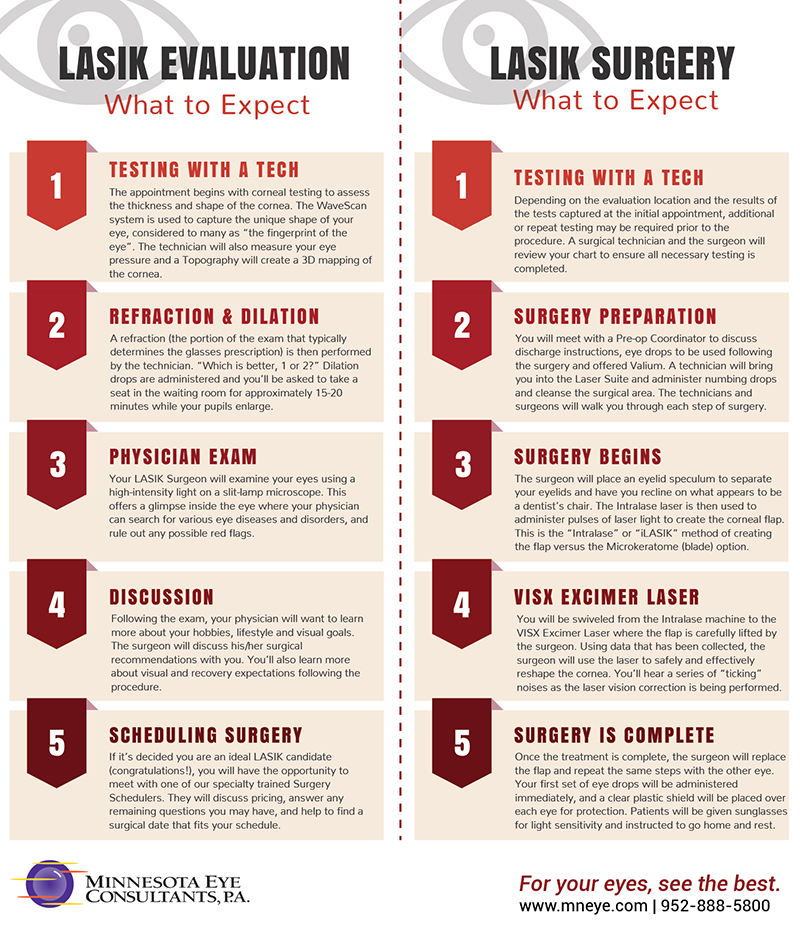
Navigating LASIK Recovery: What to Expect
Undergoing LASIK surgery is a transformative experience, but understanding the recovery process is crucial for a successful outcome. Let’s delve into the various aspects of LASIK recovery, from the immediate post-operative period to the long-term adjustments, providing insights into what patients can expect.
Immediate Post-Operative Period: Rest and Healing
Following LASIK surgery, patients are advised to rest and allow their eyes to heal. Discomfort, mild pain, and a gritty sensation are common during the first few hours. Applying prescribed eye drops as directed helps lubricate the eyes and minimize dryness. It’s crucial to avoid rubbing the eyes and follow any post-operative care instructions provided by the surgeon to promote optimal healing.
Learn more about LASIK Recovery Expectations at www.dead-samurai.com for detailed insights.
Vision Improvement: Early Signs of Success
Many patients experience improved vision almost immediately after LASIK surgery, with some even achieving 20/20 vision within the first 24 hours. However, fluctuations in vision, such as blurriness or haziness, are normal during the initial recovery period. The eyes continue to adjust, and vision typically stabilizes within the first few days to a week.
Managing Discomfort: Addressing Temporary Symptoms
While LASIK is a relatively painless procedure, some patients may experience temporary discomfort or sensitivity to light. Wearing protective sunglasses and using prescribed eye drops help alleviate these symptoms. It’s essential to attend follow-up appointments with the surgeon to ensure proper healing and address any concerns or discomfort experienced during the recovery process.
Return to Normal Activities: Gradual Resumption
Patients often wonder when they can resume normal activities after LASIK. While most individuals can return to work and light activities within a day or two, it’s crucial to avoid strenuous exercises and activities that may put strain on the eyes for at least a week. Following the surgeon’s recommendations ensures a smooth transition back to daily routines without compromising the healing process.
Post-Operative Care: Regular Follow-up Appointments
Regular follow-up appointments with the surgeon are a vital aspect of LASIK recovery. These appointments allow the surgeon to monitor progress, address any concerns, and make adjustments if necessary. It’s essential for patients to attend all scheduled follow-ups, even if they feel their vision is optimal, as these appointments contribute to the overall success of the procedure.
Dry Eyes and Other Side Effects: Temporary Challenges
Dry eyes are a common side effect of LASIK, and patients may experience this symptom for a few weeks to several months. Surgeons often prescribe artificial tears to alleviate dryness and promote comfort. Other temporary side effects may include glare, halos, or sensitivity to light, which typically diminish as the eyes continue to heal.
Long-Term Adjustments: Patience and Persistence
While many patients achieve clear vision soon after LASIK, it’s important to note that the full stabilization of vision may take a few months. Patience is key during the long-term adjustment phase. Some individuals may notice subtle changes in vision over time, but these are usually minor and can be addressed during follow-up appointments with the surgeon.
Eye Protection and Maintenance: Prioritizing Eye Health
After LASIK, protecting the eyes from potential harm becomes even more critical. Wearing sunglasses with UV protection helps shield the eyes from harmful sun exposure, while protective eyewear during sports or activities prevents accidental injuries. Maintaining good eye health through regular check-ups and adhering to any post-operative care guidelines contributes to the longevity of the LASIK results.
Enhancements and Touch-Ups: Addressing Residual Refractive Errors
In some cases, individuals may experience residual refractive errors after LASIK. Surgeons can perform enhancements or touch-ups to fine-tune the vision and address any remaining issues. These procedures are safe and effective, providing an additional layer of assurance for patients seeking optimal visual outcomes.
Conclusion: Enjoying the Fruits of LASIK
In conclusion, understanding LASIK recovery expectations is essential for individuals considering or undergoing the procedure. Navigating the immediate post-operative period, managing temporary side effects, and embracing the long-term adjustments contribute to a successful LASIK experience. By following the guidance of the surgeon, attending regular follow-up appointments, and prioritizing eye health, patients can enjoy the lasting benefits of improved vision and reduced dependence on glasses or contact lenses.
